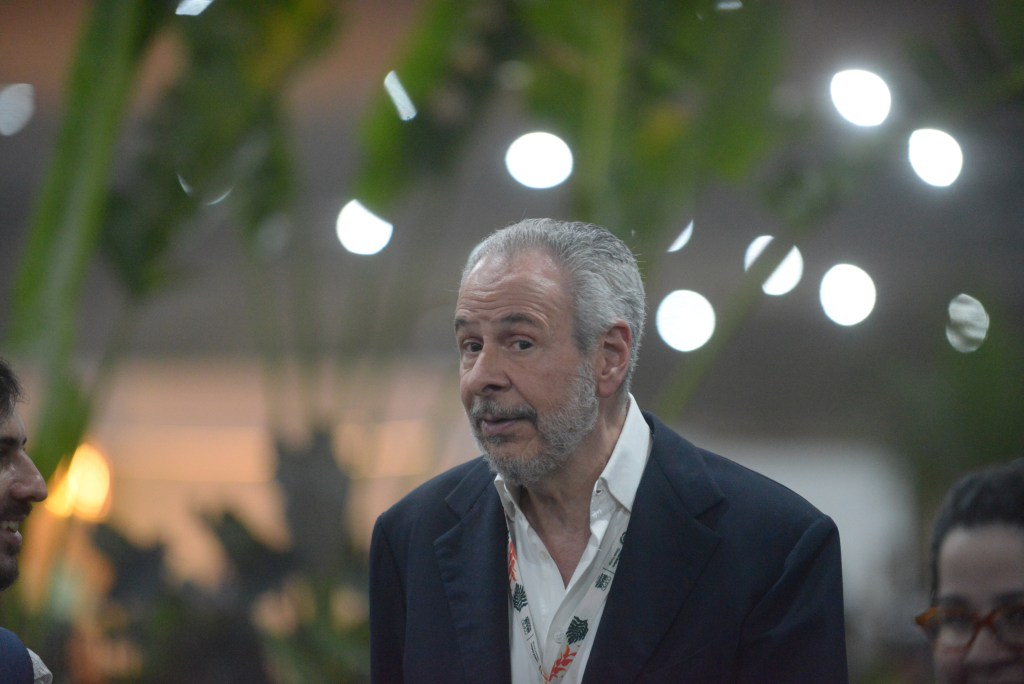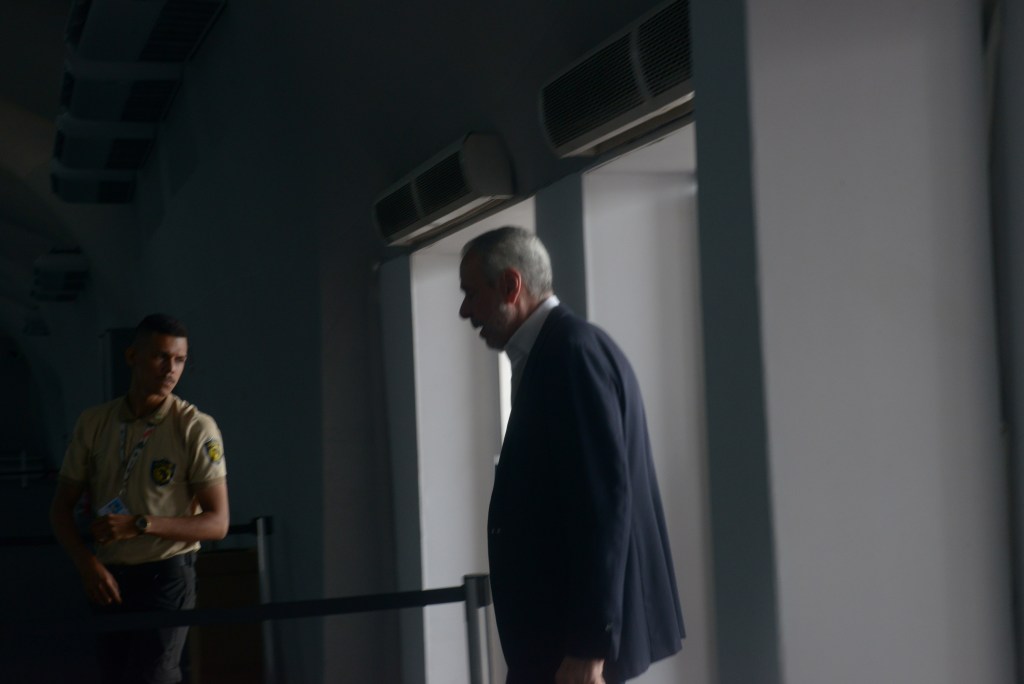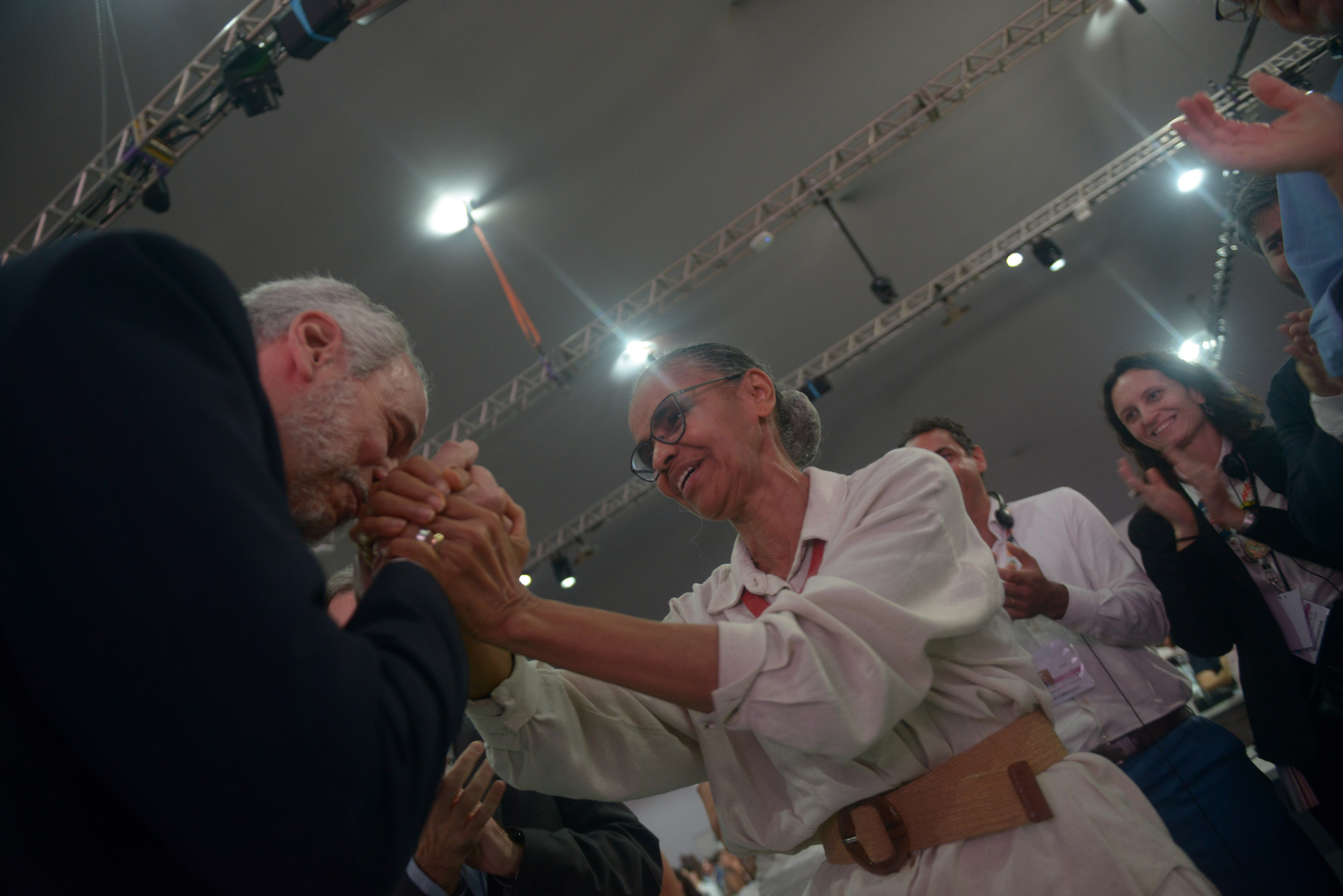The conference that sought agreements and actions to mitigate the impacts of global warming ended with criticism of its final decisions that did not include clear targets to transition away from fossil fuels, its superficial texts on mitigation, adaptation and financing, and its lack of transparency.
“The COP is over, the negotiations themselves, where we have 195 countries trying to agree on things that will improve the fight against climate change. That is the negotiation part,” said COP30 president André Corrêa do Lago.
After two weeks of work, an extra day of discussions and a bitter ending, the United Nations Climate Change Conference (COP30) ended on Saturday afternoon (22) in Belém, Brazil.
National governments reached a consensus that only minimally meets the ambition demanded by the climate crisis and expected by some countries, as well as civil society. The result is disappointing, particularly because of the total lack of commitment to advancing the phase-out of fossil fuels and the weak decisions on how to fund and implement adaptation policies.
The “historic” spirit that Brazil tried to instill since it took over the COP presidency gradually dissipated as the days went by, especially during the second week of negotiations.
President Luiz Inácio Lula da Silva’s return to the Conference on Wednesday (19) and his busy schedule of meetings with ministers and heads of delegations should have helped to unblock negotiations. But some saw it more as “a lost day of work” than political progress.
The unexpected Thursday fire inside the venue – caused by an electrical problem in the pavilion area – inevitably suspended activities and paused closed-door negotiations that had already been difficult and criticized for their lack of transparency.
On the 10th anniversary of the Paris Agreement, what are the results of COP30? We take a look at five key areas.
A process lacking transparency that fell far short of the “COP of Truth
“The year of 2024 was the first in which the Earth’s average temperature surpassed pre-industrial levels by a degree and a half. […] COP30 must be the COP of truth,” said Lula in his opening speech at the Leaders’ Summit that took place before the climate conference.
In order to combat disinformation and scientific denialism as well as to guarantee transparency, Brazil adopted “COP of Truth” as one of the many slogans it sought to ascribe to the conference. But this was not compatible with what happened in the final plenary session.



André Côrrea do Lago, president of COP30, on the last day of the conference. Photos: Luis Ushirobira/InfoAmazonia
Ignoring the protocol that prescribed looking at the delegates and checking for objections, Corrêa do Lago sped up the process: he gaveled item after item, starting precisely with the most controversial topics. The gesture formalized the decisions, but problems appeared soon after.
Panama, Uruguay, and Colombia denounced that they had raised their signs (i.e., requested the floor) before some of those decisions were adopted, but the presidency did not grant them the floor. Correa do Lago’s cold response, stating that the comments would be included in the final plenary session’s report, caused the countries to sustain their complaint and make their stance explicit with a word that no COP presidency wants to hear: objection.
An objection raised at a plenary session means that the country is expressly denying consensus to the agreement, and therefore, discussions should continue, since COP decisions must be 100% consensual.
 Delegates from Colombia raising a point of order. Photo: Mike Muzurakis/IISD/ENB
Delegates from Colombia raising a point of order. Photo: Mike Muzurakis/IISD/ENB
Colombia objected to the Mitigation Work Program. “The ‘COP of Truth’ cannot endorse a result that ignores science. According to the IPCC [the Intergovernmental Panel on Climate Change], almost 75% of global CO2 emissions come from fossil fuels. There is no mitigation if we can’t debate the transition to abandoning fossil fuels with means for its implementation, in a fair, orderly and equitable way,” said Daniela Durán González, head of International Affairs at Colombia’s Ministry of Environment and Sustainable Development.
Uruguay – also on behalf of Argentina, Ecuador and Paraguay – objected to the Global Goal on Adaptation (GGA). The country’s National Director for Climate Change María Fernanda Souza stated: “We would like to state that, as our countries have repeatedly sustain in recent hours and throughout the night, and given that we have had access to the draft decision on the GGA since 3 a.m. yesterday, including the 59 indicators recently drafted, we inform you that we are not ready to support the adoption of this decision as it is.”
Indeed, while the presidency rapidly advanced to approve points, InfoAmazonia had received a message from a delegate warning that some countries had “raised their signs” and the presidency was not giving them the floor.
Other countries did not refute the decisions but maintained their discontent at the adaptation text. The European Union said that “it supported these indicators, and Sierra Leone criticized their quality, saying they were ‘unclear and, in some cases, unsustainable.’”
How did it end?
After suspending the session, the COP30 presidency and the United Nations Convention stated that the objections reached them after the decisions had already been made and that, therefore, there was no going back. Corrêa do Lago suggested discussing these issues at the intersessional meetings in June in Bonn, Germany. The problem is that the agreed texts will no longer be reopened or modified.
This fact was yet another element of a COP that, according to delegates and observers, lacked the necessary transparency in the discussion process to reach results that included everyone’s interests.
Catherine Abreu, director of the International Climate Politics Hub, a network of organizations and individuals working to accelerate climate action, had warned on Friday (21) that the ongoing talks were not transparent and that the presidency was defending the second draft package and giving countries only two options: “take it or leave it”.
Aldem Meyer, senior associate at the independent climate policy consultancy E3G, added that “the presidency restricted diplomacy to only a few countries” instead of making the joint work proposed under the motto of “Mutirão” [Collective Effort] a reality.
This could also be seen in the prevalence of closed-door consultations – without the presence of civil society representatives observing the process – and plenary sessions that did not allow for country presentations, as well as texts that included changes and new content that had not been discussed.


A COP that will be remembered as ‘the COP of adaptation’?
COP30 needed to decide on two key elements regarding adaptation: the indicators that would guide the implementation of climate readiness policies and the exclusive funding target for this type of policy in developing countries.
Last October, Corrêa do Lago had said in an interview with InfoAmazonia that he “would very much like people to remember COP30 as a COP of adaptation”.
Decisions were made on both issues. In neither case did they have the necessary ambition.
The adoption of the GGA characteristics was one of the most critical points of the results achieved, especially regarding the indicators. Developed and developing countries expressed their disagreement with the list.
At the plenary session, Uruguayan Minister Souza said that the implementation of the target should follow the list of 100 indicators based on technical advice by experts and worked on for almost two years, and not on the 59 indicators that appeared in Belém in recent days.
The adoption of the GGA means that work on the indicators can finally move forward with the support of the Adaptation Committee and the Expert Group. [However,] the absence of any reference to the GGA in the overall policy document [the Mutirão] weakens the entire package.”
Demet Intepe, adaptation and resilience specialist at the organization Practical Action.
Although the agreed texts cannot be reopened for negotiation, the indicators in the GGA annexe might be redefined in the technical negotiations in Bonn, and the technical path can be resumed.
Belém was also supposed to be an opportunity to reduce the funding gap for mitigation and adaptation – or at least that is what developing countries hoped for. The decision adopted was met with mixed reactions: some were pleased to reach the minimum level, while others were dissatisfied with the weak vocabulary.
“There is no clarity on how much money is channeled to adaptation, where it will come from, its quality, or how progress will be measured,” said Global Climate Justice Policy and Advocacy Lead at CARE International, in a statement.
Without adequate, public, grant-based finance and ambition, climate change will keep multiplying poverty and deepening inequality, especially for women and girls fighting daily for safety and dignity.”
Marlene Achoki, Director of Policy and Promotion of Global Climate Justice at CARE International
While the “Mutirão Decision” mentions the need to triple adaptation finance, the text uses the phrase “call for,” which weakens the accountability for implementation. Furthermore, the text does not establish a base year for calculating this increase and sets the deadline for compliance at 2035, postponing the 2030 target advocated in previous negotiations.
Even the UN Secretary-General António Guterres reaffirmed in a press interview the need for commitment to the objectives. “I consider it possible and desirable to triple the adaptation finance until 2030. And I strongly hope that it will be possible to find a compromise in which developed countries accept to engage in these objectives and, at the same time, that their concerns about mitigation are also met by the COP.”
 Army surrounds COP30 building after protests. Photo: Luis Ushirobira/InfoAmazonia
Army surrounds COP30 building after protests. Photo: Luis Ushirobira/InfoAmazonia
A decision – in an oil-producing country – without new commitments to move away from fossil fuels
If one thing was discussed before the event and during the two weeks of the conference, it was the idea that Brazil should establish a roadmap for the transition away from fossil fuels.
Brazil’s Minister of the Environment and Climate Change (MMA) Marina Silva brought this initiative to every activity she attended and every speech she gave in Belém. Other countries – both developed and developing ones, from Denmark to Colombia – soon offered their support for the proposal. However, from the COP30 presidency, Corrêa do Lago clarified: “The topic was not an agenda item in the negotiations of this conference.”
Using somewhat imprecise language, the idea seemed to emerge in the first draft of the Mutirão Decision but was eliminated in the version adopted.
“Delegates and observers confirmed to InfoAmazonia the justification presented by the presidency during the consultations: the passage was removed after a group of countries went to the president’s office to warn that they would veto the final agreement if there was any mention of fossil fuels. The question remains as to how much Brazil really wanted to maintain this roadmap at COP30.”
Brazil is not among the 24 countries that supported the “Belém Declaration on a Just Transition Away from Fossil Fuels“. It is also not part of the international alliance Beyond Oil & Gas, through which governments and other actors work together to facilitate the progressive elimination of oil and gas production until its end.
Since the G20 meeting in South Africa, Colombia’s President Gustavo Petro has supported his delegation’s objection at the plenary session in Belém: “I don’t accept that the COP30 declaration does not clearly state, as science does, that the cause of the climate crisis is the fossil fuels used by capital (…) Colombia opposes a COP30 declaration that does not tell the scientific truth to the world.”
“In an attempt to avoid being labeled as a failure, Brazil promised to deliver the roadmap as an act of the presidency rather than a consensus of the conference. This makes the document voluntary and without legal power, excluding it from the official monitoring process of the Paris Agreement.”
According to the little that has been published about it, the roadmap will address the fiscal, economic, and social challenges of the transition, pointing out credible ways to expand zero-emission and low-carbon options.
The next step to advance on the issue will be the Global Phase-Out Conference on Fossil Fuels, to be held on April 28-29, 2026, in Santa Marta, Colombia, with the support of the Netherlands.
In practice, there is an important distinction between the terms. While the conference aims for “phase-out” – a language that demands the total and gradual elimination of fossil fuels – the Brazilian roadmap relies on “transition away.” Agreed upon at COP28, it uses less ambitious language, proposing only a move away from this type of energy, without the power of elimination.
The second question is whether the roadmap will repeat the characteristics of the Baku-Belém roadmap to scale up financing to US$1.3 trillion, which ended up being a mere report with good recommendations, without implementation within the COP process and of which the countries only “took note” in the Belém decision.
A step towards a somewhat fairer transition
Of all the decisions adopted, the Just Transition Work Program was the most celebrated as a favorable outcome. The countries agreed to establish a mechanism for its implementation that will seek to improve international cooperation, technical assistance, capacity-building, and knowledge-sharing, thus enabling just, equitable, and inclusive transitions.
 Marcha Global pelo Clima em 15 de novembro de 2025. Foto: Ahmad Jarrah/A Lente
Marcha Global pelo Clima em 15 de novembro de 2025. Foto: Ahmad Jarrah/A Lente
The document recognizes the rights of indigenous and Afro-descendant communities and the importance of making them active participants in the transition.
“The pathways of the transition – including the expansion of fossil fuel and mineral extraction for energy transition, and large-scale renewable energy projects – are seriously affecting indigenous communities and violating our rights,” said Emil Gualinga, a member of the Kichwa indigenous people of Sarayaku, Ecuador. “This decision provides us with tools to continue with our demands, nationally and internationally, in order to ensure that all policies related to the energy transition respect our rights,” he said.
From paper to reality, Gualinga criticized the conference organizers’ response to the actions and presence of indigenous communities around the venue. After protests, security was reinforced. “The militarization of COP shows that indigenous communities are seen as a threat, and the same happens in our territories: militarization occurs when these communities defend their rights against oil, mining, and other extractive projects.”
 Delegação da Etiópia na plenária final da COP30. Foto: Rafa Neddermeyer/COP30 Brasil Amazônia/PR
Delegação da Etiópia na plenária final da COP30. Foto: Rafa Neddermeyer/COP30 Brasil Amazônia/PR
The transversal and conflictive finance, and what comes next
The Mutirão Decision included elements of a topic that has been contentious among countries from the beginning: developed countries’ responsibility to mobilize public money for developing countries as per Article 9.1 of the Paris Agreement.
After a climate finance target set in 2024, which will mobilize US$300 billion annually starting in 2026, with money from multiple sources, the responsibility of developed countries to mobilize public money became highly diluted in Belém.
“For a just transition to be possible, public funding support, economic system reform, and a clear roadmap to phase out fossil fuels are necessary,” said Friederike Strub, climate finance activist at the organization Recourse.
Rich countries have done everything possible to dilute their financial obligations, refuse to pay their climate debts, and undermine the profound structural changes needed in a climate and development finance architecture that, to date, has failed to deliver justice”
Friederike Strub, Climate Finance activist at Recourse.
The decision established a two-year work program on climate finance that includes Article 9.1 but refers to climate finance in general, not exclusively to this particular article.
What happens next? Seventy-nine countries – including India – still need to formally submit their national climate plans (NDCs) with more ambitious commitments that contribute to limiting warming to below 1.5°C.
After several back-and-forths, Turkey will preside over the next COP31 on November 9-20, 2026. The conference will have a unique characteristic: Australia, with the support of the Pacific countries, will be in charge of presiding over the negotiations, that is, coordinating the discussions. COP32 will be held in Ethiopia, and it remains to be seen whether India maintains its desire to lead the following conference as a representative of the Asian region.
Before all this and after the end of COP30, the most important part of the schedule has already begun: the implementation, in each country, of multilateral commitments.
“Denial, division and geopolitics have dealt international cooperation some heavy blows this year. […] COP30 showed that climate cooperation is alive and kicking, keeping humanity in the fight for a livable planet,” UNFCCC Executive Secretary Simon Stiell said after the end of the conference. He emphasized: “I’m not saying we’re winning the climate fight. But we are undeniably still in it, and we are fighting back.”
